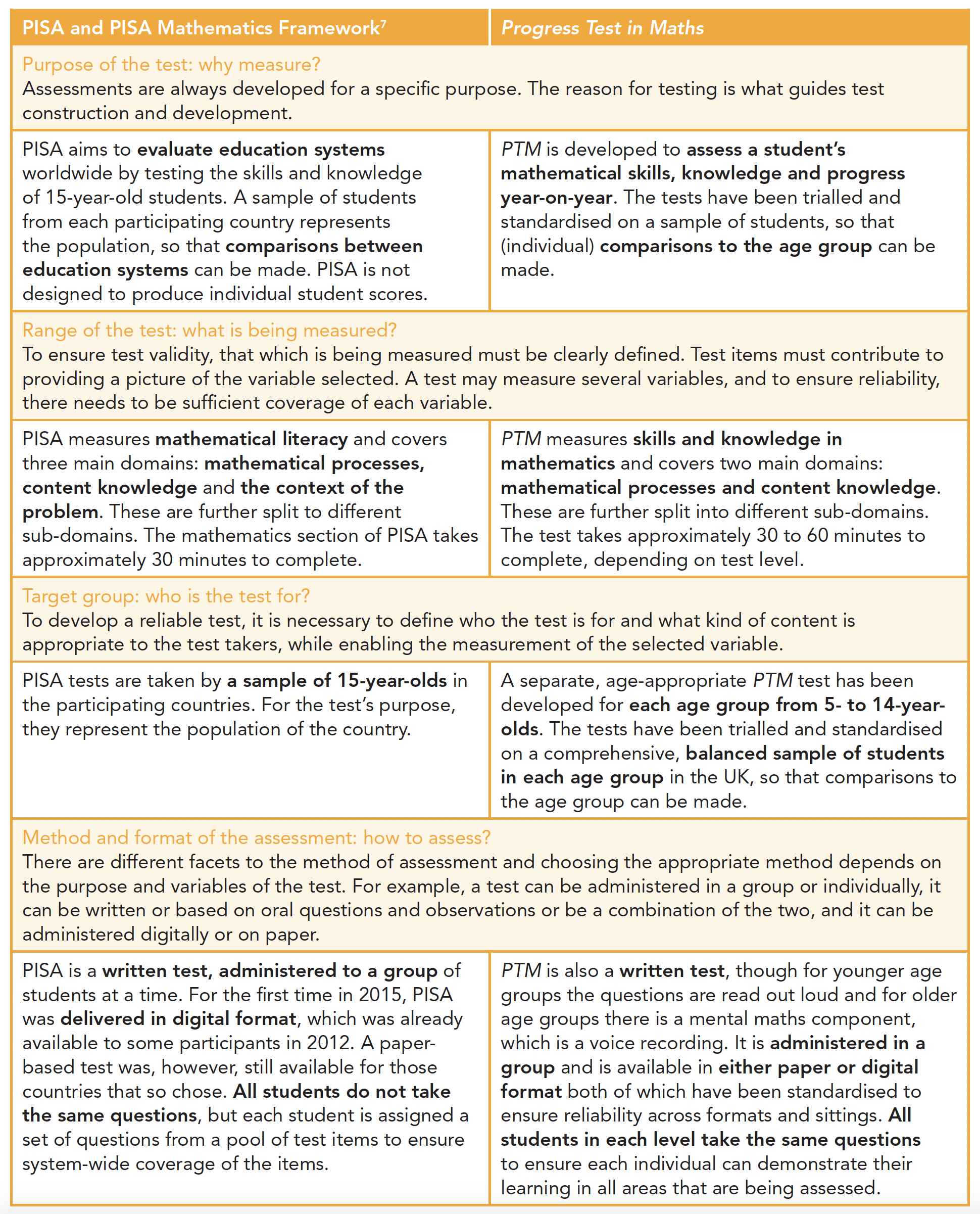Assessment construction, outcomes and goals
While both assessments measure students’ understanding in the field of mathematics, there are differences in the construction and purpose of the two tests, and these affect the extent to which it is meaningful to draw comparisons.
The differences do not mean that one test would be better than the other, or provide more ‘correct’ results. As demonstrated above, both assessments build on a shared understanding of what is meant by ‘mathematical competency’. This encompasses dimensions from skills and knowledge to mathematical reasoning and problem solving. However, a comparison of any two different assessments must always take in to account what is being assessed, why it is being assessed, who is being assessed and how it is most appropriate to conduct the assessment.
The following table shows a comparison of these dimensions between PTM and PISA Mathematics.

The purpose of the two assessments is different, but there is significant overlap in content and methods. The strength of PTM is that it has been specifically developed and reliably standardised for each age group and helps identify individual needs, while PISA provides a snapshot of an education system’s performance in a particular year with particular students.
The strength of PTM is that it has been specifically developed and reliably standardised for each age group and helps identify individual needs, while PISA provides a snapshot of an education system’s performance in a particular year with particular students.
7 For sources, please see the end of this document.
Was this useful?
Our priority is to ensure you have the information you need to get the best from our products, and would like to know if this page helped you find what you needed?

